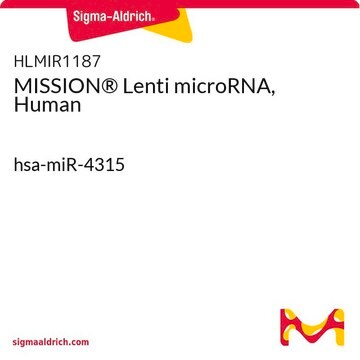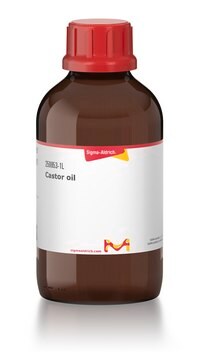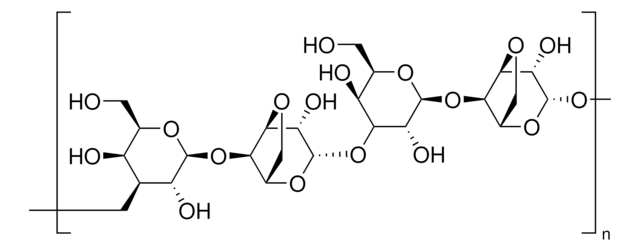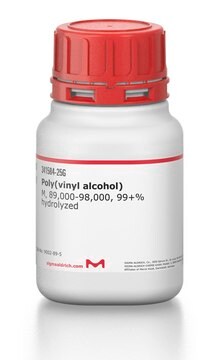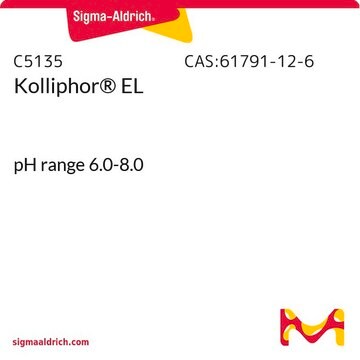S8281
Safflower seed oil from Carthamus tinctorius seed
Autenticatiper visualizzare i prezzi riservati alla tua organizzazione & contrattuali
About This Item
Prodotti consigliati
Origine biologica
plant seeds (Carthamus tinctorius)
Stato
liquid
Indice di rifrazione
n20/D 1.476 (lit.)
Densità
0.921 g/mL at 25 °C (lit.)
Gruppo funzionale
carboxylic acid
oleic acid
Tipo di lipide
oils
Condizioni di spedizione
ambient
Temperatura di conservazione
room temp
Cerchi prodotti simili? Visita Guida al confronto tra prodotti
Applicazioni
<ul>
<li><strong>Anti-osteoporosis effects of mammalian lignans and their precursors from flaxseed and safflower seed using zebrafish model:</strong> The study investigates the potential health benefits of safflower seed oil in preventing osteoporosis, highlighting its utility as a dietary supplement (Yang et al., 2023).</li>
</ul>
<li><strong>Anti-osteoporosis effects of mammalian lignans and their precursors from flaxseed and safflower seed using zebrafish model:</strong> The study investigates the potential health benefits of safflower seed oil in preventing osteoporosis, highlighting its utility as a dietary supplement (Yang et al., 2023).</li>
</ul>
Stato fisico
Raw oil without preservative
Codice della classe di stoccaggio
10 - Combustible liquids
Classe di pericolosità dell'acqua (WGK)
awg
Punto d’infiammabilità (°F)
Not applicable
Punto d’infiammabilità (°C)
Not applicable
Dispositivi di protezione individuale
Eyeshields, Gloves
Scegli una delle versioni più recenti:
Possiedi già questo prodotto?
I documenti relativi ai prodotti acquistati recentemente sono disponibili nell’Archivio dei documenti.
I clienti hanno visto anche
Young Taek Oh et al.
Physiology & behavior, 167, 194-201 (2016-10-25)
Previous rodent studies showed that when injected into the brain, free fatty acids (FFAs) reduced food intake in an oleate-specific manner. The present study was performed to test whether food intake is regulated by circulating FFAs in an oleate-specific manner.
Takeshi Arai et al.
The Journal of nutritional biochemistry, 24(1), 267-273 (2012-08-21)
We investigated the effects of dietary fat energy restriction and fish oil intake on glucose and lipid metabolism in female KK mice with high-fat (HF) diet-induced obesity. Mice were fed a lard/safflower oil (LSO50) diet consisting of 50 energy% (en%)
Christopher M Mulligan et al.
Cardiovascular research, 94(3), 460-468 (2012-03-14)
Cardiolipin (CL) is a tetra-acyl phospholipid that provides structural and functional support to several proteins in the inner mitochondrial membrane. The majority of CL in the healthy mammalian heart contains four linoleic acid acyl chains (L(4)CL). A selective loss of
R A Gibson et al.
Prostaglandins, leukotrienes, and essential fatty acids, 88(1), 139-146 (2012-04-21)
The conversion of the plant-derived omega-3 (n-3) α-linolenic acid (ALA, 18:3n-3) to the long-chain eicosapentaenoic acid (EPA, 20:5n-3) and docosahexaenoic acid (DHA, 22:6n-3) can be increased by ALA sufficient diets compared to ALA deficient diets. Diets containing ALA above an
K G Lamping et al.
Diabetes, obesity & metabolism, 15(2), 144-152 (2012-09-07)
The ability of dietary enrichment with monounsaturated fatty acid (MUFA), n-3 or n-6 polyunsaturated fatty acids (PUFAs) to reverse glucose intolerance and vascular dysfunction resulting from excessive dietary saturated fatty acids is not resolved. We hypothesized that partial replacement of
Il team dei nostri ricercatori vanta grande esperienza in tutte le aree della ricerca quali Life Science, scienza dei materiali, sintesi chimica, cromatografia, discipline analitiche, ecc..
Contatta l'Assistenza Tecnica.

